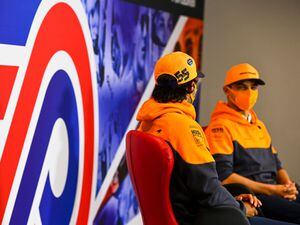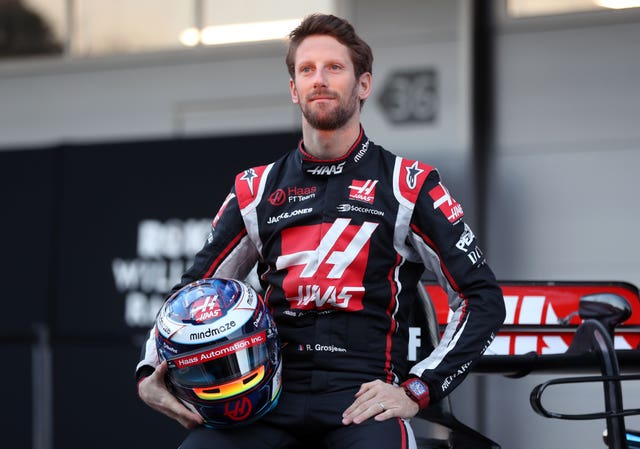Formula 1: Drive to Survive Series 3 Review – a documentary loosely based in reality
F1’s third behind-the-scenes documentary was released last week.

Formula 1’s deal to grant Netflix documentary makers access to race weekends was an inspired idea. The first season did a great job of introducing fans to the characters behind the scenes, and brought new fans to the drama and excitement of the world’s leading race series.
Most hardcore F1 fans understand that the series is made for a more mainstream audience, so there’s come creative licence when it comes to storylines. Mismatched audio to make cars sound faster and clever editing to create conflict can be annoying for die-hards but to new fans, it can help build excitement.
The third series arrived last Friday with much anticipation. This was a tumultuous season that saw Covid disrupt everyone’s plans – including seeing reserve drivers stepping in for sick drivers, some incredible battles on track, and who can forget Romain Grosjean’s death-defying crash in Bahrain that made front page news around the world?
So with many fans bingeing the series over the weekend it’s perhaps a surprise that many have been left underwhelmed by the storytelling on offer. You could blame Covid for making filming difficult, but production teams were embedded with teams so access will have been similar to normal.

It seems like, generally speaking, that most viewers’ issues are related to how fake the storytelling is. For example, in one episode the story focuses on McLaren team-mates Lando Norris and Carlos Sainz. It tries to frame them as rivals, with a friendship breaking down because of jealousy.
At one point, a frustrated radio call from a completely different moment in the race is played out to imply Norris is annoyed at a move Sainz pulled.
In truth, the Sainz-Norris bromance is one of the most enjoyable stories in Formula 1 in recent years, gaining the team many fans and contributing massively to the car going from sponsor-free to being smothered in brands within just a couple of years. It feels like an odd editorial angle.
Then there’s over-dramatised crashes. For example, Charles Leclerc was involved in a nasty crash at Monza, which Drive to Survive prolonged to imply the Monegasque was in trouble. In the real recordings, his engineer asks ‘are you okay?’, to which Leclerc immediately responds ‘yes, it was a big crash’.
In the Netflix show, there’s an artificial delay to create suspense, and again, radio is used from another time with the engineer asking if Leclerc can hear him. It leaves a sour taste in the mouth, creating drama out of potential injury.
These storytelling complaints come even before we get into the fact that Lewis Hamilton’s legendary drive at a wet Turkish Grand Prix is ignored, as is young George Russell’s epic, heartbreaking drive for Mercedes when Hamilton had to take a break after getting Covid.
It also brushed over the Williams family selling its F1 team after 45 years in the sport. That’s one of the biggest stories in F1, as founder Sir Frank Williams is a legend of the sport.
That’s not to say it’s unwatchable; there are some excellent moments. Seeing behind-the-scenes of Sebastian Vettel’s unravelling relationship with Ferrari makes compelling viewing. Meanwhile, getting to know Pierre Gasly, who’s had a tough time personally and professionally, is the kind of story existing fans want to see more of.

Ultimately, Drive to Survive is not for hardcore F1 fans. But if it wants to continue to be taken seriously and create life-long fans who tune in to live races every week, it surely needs to base itself closer to reality.
The producers could trust the audience to see the drama as compelling enough on its own. There’s no need to create tension. No-one watched Leclerc’s crash live and wasn’t concerned for his safety. Rooting for Russell in his big chance to prove himself only to see his dreams shattered by misfortune is gripping enough television already. We don’t need fictional conflict off the track.
This is further shown in the coverage of Grosjean’s horrific crash in Bahrain. The episode seems to drag out the time he was in the flames to ludicrous levels. He spent almost 30 seconds inside that fire. It was horrifying, and like with Leclerc, the episode felt like the drama was coming from glorifying potential injury – or in this case, potential death.
This is reality television, and we all know that in this genre TV plays fast and loose with the concept of ‘reality’. But with reports that Netflix is back in the paddock for 2021, hopefully for season four it tones down the faked storylines and focuses on the real drama… because there’s plenty.
